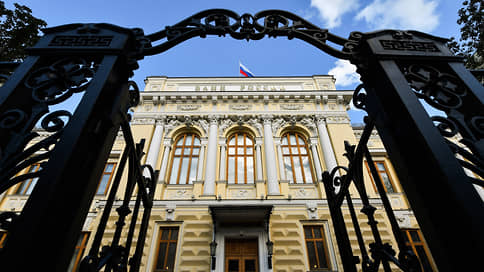The Bank of Russia changes the procedure for calculating the short-term liquidity indicator
[ad_1]

The Bank of Russia is changing the procedure for calculating the short-term liquidity indicator. Highly liquid will be considered, for example, new digital rubles, as well as other more familiar assets. At the same time, the Central Bank, which is working on a new “national” standard, does not exclude the preservation of the current “Basel” as an additional risk indicator. Bankers are positive about the changes: according to the Central Bank, they can add about 10 percentage points (p.p.) to the value of the standard.
The calculation by banks of the indicator of short-term liquidity in terms of the implementation of the corresponding standard according to Basel III will be specified. The list of changes was published by the Central Bank this week. Discussion on the project will last until September 4.
Currently, systemically important banks must comply with the short-term liquidity ratio (TLC), but credit institutions with assets of more than 100 billion rubles also submit its indicators to the Central Bank. This standard limits the risks of loss of liquidity and shows the bank’s ability to fulfill obligations in conditions of instability on the horizon of 30 days, the minimum allowable value is 100%. Now there is an indulgence in the NCL – until the end of the year, banks can violate it under certain conditions. The actual value of NCL as a whole for systemically important banks decreased in 2022 from 112% to 64%, the Bank of Russia reported in its annual report.
Among the main changes introduced by the Central Bank is the expansion of the composition of highly liquid assets and the clarification of the procedure for calculating the net expected outflow.
In particular, it is planned to add digital rubles to highly liquid assets, Dom.RF own bonds (now only mortgage-backed securities guaranteed by Dom.RF), nationally rated corporate bonds (now only with at least one international rating a certain level), include securities pledged as collateral under clearing participation certificates, as well as, in some cases, term deposits with the Central Bank. According to the regulator’s calculations, all these changes (with the exception of digital rubles, the effect of which cannot yet be assessed) can give +10 p.p. to the LCL for systemically important banks. The new calculation procedure will become mandatory from October 1, 2024.
“The regulator has taken a timely step, and the new short-term liquidity ratio will help to take into account the peculiarities of the Russian banking system,” the ICB believes. Natalya Vashchelyuk, chief analyst at Sovcombank, believes that these changes “slightly soften the implementation of the NCL for banks.”
The Central Bank also confirmed that additional changes are being prepared, says Kommersant’s interlocutor in the banking market.
Top managers of Sberbank and VTB spoke about the need for NKL reform and “bringing in order” at the Financial Congress in early July. Then the Deputy Chairman of the Board of VTB Dmitry Pyanov noted that the “Basel” TCL, calculated for the entire banking system, is 57% with the desired 100%.
Elvira Nabiullina, Head of the Central Bank, June 9:
“Before the end of this year, we will hold a discussion within the Bank of Russia on what the updated liquidity ratio should be.”
At the same time, one of the early “recipes” for banks to comply with the tax tax — an increase in the OFZ share in assets — no longer has a positive effect on the standard, the top manager clarified, and the “peculiarities of the Russian economy”, in particular, uniform tax dates, have added new problems. On specific days of the month (and the norm must be observed on a daily basis), there may be an outflow from the system in the amount of 3 trillion rubles, which can return to the system in two or three days.
First Deputy Chairman of the Board of Sberbank Alexander Vedyakhin noted then that as a result of price competition, banks can “burn a lot of money.” “To us, in order to fully comply with the requirements (according to NKL.— “b”), we need to get 3 trillion rubles from the market, for this we need to make a step in deposits somewhere between 1-1.5 percentage points up,” he explained.
At the same time, the proposed refinement of the calculation of the short-term liquidity indicator is only an intermediate stage: the Central Bank is developing a new national NCL. As the Central Bank explained to Kommersant, until the moment of its implementation, the current regulation will continue to operate: “Thus, updating the current procedure for calculating the short-term liquidity ratio is expedient both in the short term (reflecting current changes in the financial market) and in the long term (using it as a additional indicator of liquidity). The Bank of Russia admitted that after the introduction of the new standard, the current one may be retained for additional risk assessment.
[ad_2]
Source link





